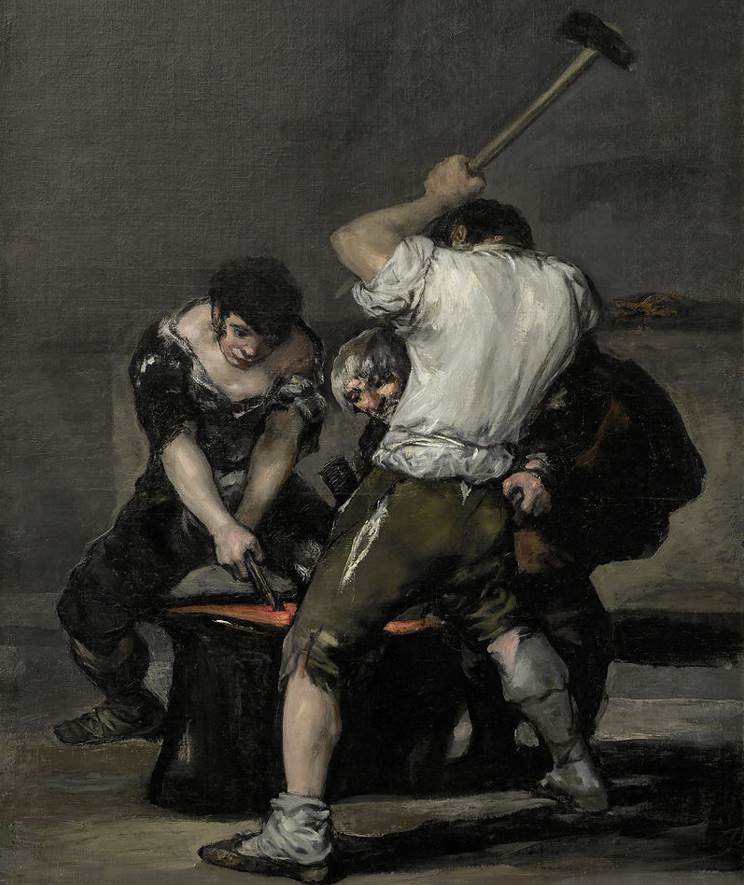When you think about museums in New York City, then the first ones that come to mind are probably either the MET or the MoMA. That’s because these are two of the largest and most famous museums in the world.
The Metropolitan Museum of Art has one of the largest collections of paintings and other artworks in the world, and the MoMA has one of the most renowned collections of modern art on the planet.
A lesser-known but equally fascinating museum is the Frick Collection. It was founded in 1935 after rich American industrialist and art patron Henry Clay Frick (1849-1919) bequeathed his collection of fine art to the public.
The collection is normally held at the Henry Clay Frick House but is temporarily held at Frick Madison due to a renovation project. Both locations are just walking distance (5 blocks) away from each other on the southeastern side of Central Park in Manhattan.
In this article, you’ll discover some of the most famous paintings at the Frick Collection, artworks that range from Renaissance paintings to Romantic masterpieces.
1. Virgin and Child, with Saints and Donor – Jan van Eyck
- Date created: 1441-1443
- Dimensions: 47 x 61 centimeters (18.5 x 24 inches)
Virgin and Child, with Saints and Donor, is a painting by Jan van Eyck, a Renaissance master who lived and worked in Bruges for most of his mature career. Although the painting was started by Jan van Eyck (1390-1441), it was most probably not completed by him but by his workshop because the Flemish artist passed away in 1441.
The painting is believed to depict a Carthusian monk named Jan Vos. He commissioned the painting and kneels before the Virgin Mary and Saint Barbara and Saint Elizabeth. It once served as the memorial of the donor and is now one of the most fascinating paintings in the Frick collection.

2. St. Francis in the Desert – Giovanni Bellini
- Date created: 1475-1480
- Dimensions: 124.6 × 142 centimeters (49.1 × 56 inches)
St. Francis in the Desert is also known as St. Francis in Ecstasy and is one of the ultimate masterpieces of Italian artists of the Renaissance Giovani Bellini (1430-1516). It depicts the Italian Saint Francis of Assisi (1181-1226), a man who is considered to be the patron saint of Italy.
The painting never left Venice until it was moved in either the late 18th or 19th century. It somehow ended up for auction at Christie’s in 1852 and was exhibited at the 1857 Manchester Art Treasures exhibition. Henry Clay Frick bought this marvelous work of art for $170,000, a rather hefty sum, in 1915
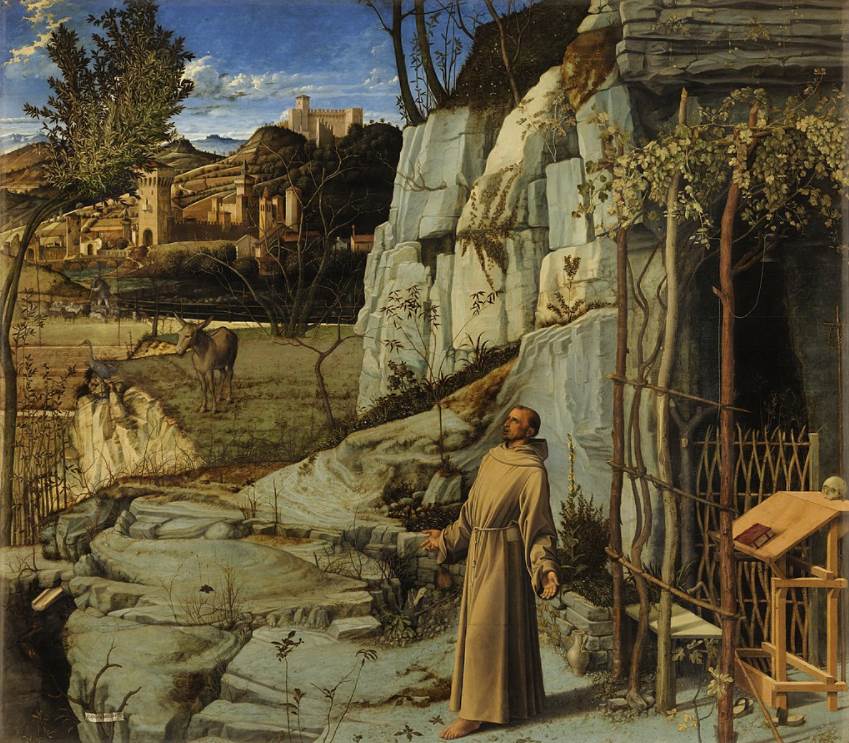
3. Portrait of a Man in a Red Cap – Titian
- Date created: 1510
- Dimensions: 82.2 x 71.1 centimeters (32.37 x 28 inches)
Portrait of a Man in a Red Cap is one of the early paintings by Titian, one of the great masters of the Venetian School of the 16th century. The mastery of Tiziano Vecelli (1490-1576) is especially emphasized by the fur of the coat that the depicted man is wearing.
The young man holds one gloved hand on his sword and looks in the distance with a dreamy glance. The red cap he is wearing was a fashionable clothing item at the time and the gold satin is a reflection of the man’s wealthy status.

4. Allegory of Virtue and Vice – Paolo Veronese
- Date created: 1565
- Dimensions: 219.1 × 169.5 centimeters (86.3 × 66.7 inches)
Allegory of Virtue and Vice is also known as either “The Choice Between Virtue and Vice” or “The Choice of Hercules.” Paolo Veronese (1528-1588) depicted Hercules as he is struggling between choosing the right or the wrong path. The two women are allegorical representations of virtue and vice.
Letters are carved into the stones in the top left corner and read “HONOR ET VIRTUS POST MORTE FLORET.” This translates to “Honor and Virtue Flourish after Death.” This Mannerist painting is accompanied at the Frick collection by another Veronese painting called “Wisdom and Strenght.”
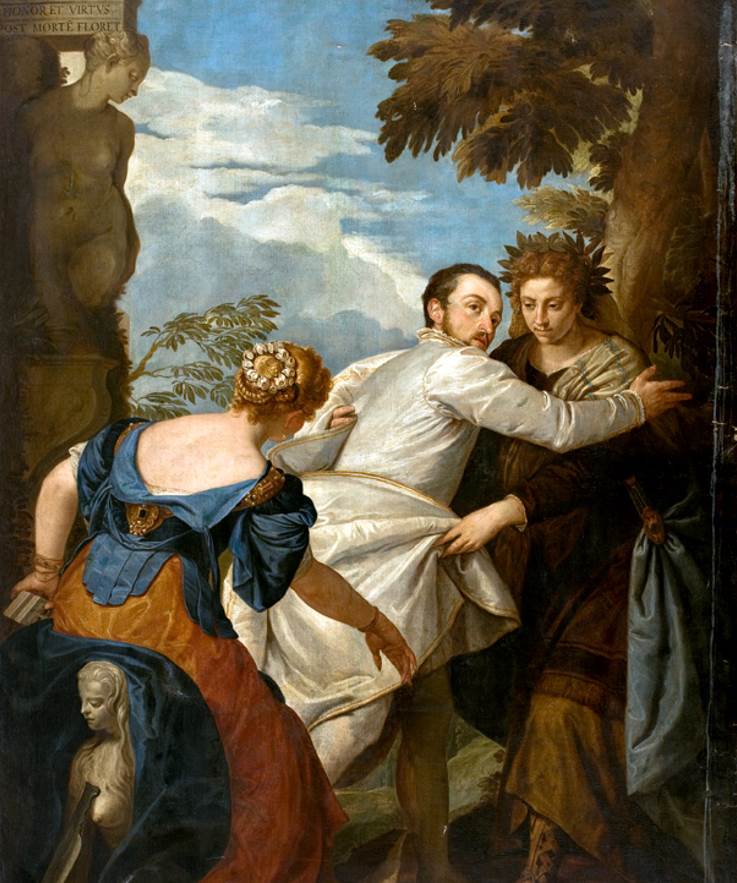
5. Christ Driving the Money Changers from the Temple – El Greco
- Date created: 1600
- Dimensions: 42 × 52 centimeters (17 × 20 inches)
Christ Driving the Money Changers from the Temple is also known as “Purification of the Temple” and is one of the masterpieces of El Greco, the Greek-born Spanish artist whose real name was Doménikos Theotokópoulos (1541-1614).
The Mannerist artist had an extremely distinctive style of painting, something perfectly reflected in this delicate little work of art. The subject of this painting was a popular one during the Counter-Reformation as it was considered to be a metaphor for expelling heretics from the Catholic Church.
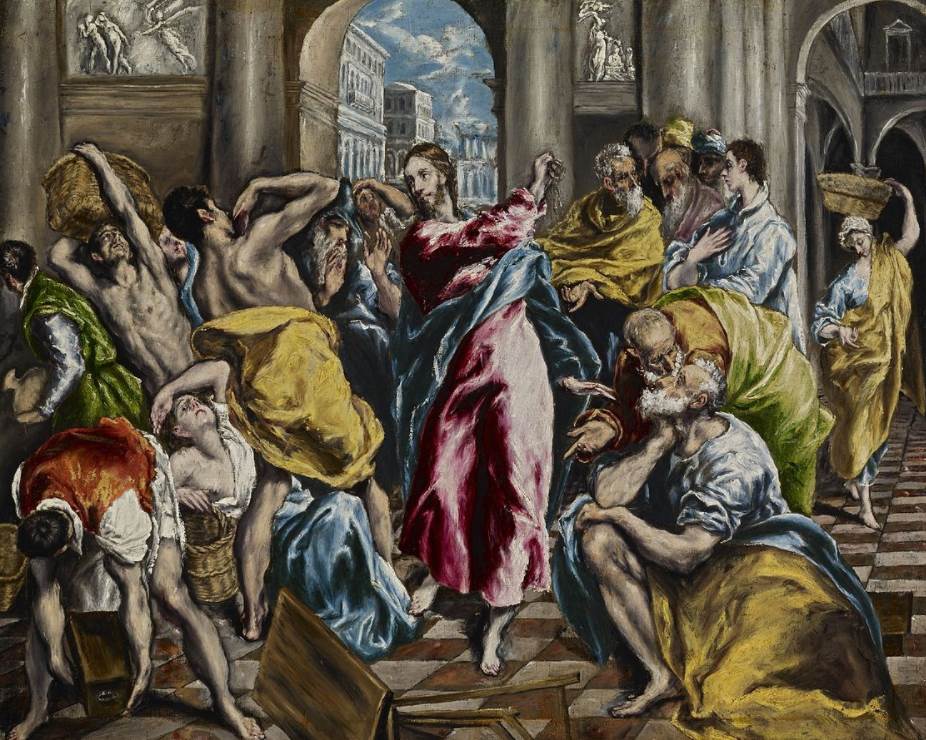
6. Portrait of Philip IV in Fraga – Diego Velázquez
- Date created: 1644
- Dimensions: 129.8 × 99.4 centimeters (51.1 × 39.1 inches)
The Portrait of Philip IV in Fraga is one of the multiple paintings by Velázquez that depict his patron, the Spanish King Philip IV. Diego Velázquez (1599-1660) was the court painter of the king and spent most of his career working at the Spanish court in Madrid.
The painting was named after the city of Fraga in the province of Huesca in Spain. The court was briefly moved here during a time of trouble in the city of Lérida which was retaken by Spain from the French. The painting accurately depicts “the way the king entered Lérida, wielding a military staff, and dressed in crimson plush.”
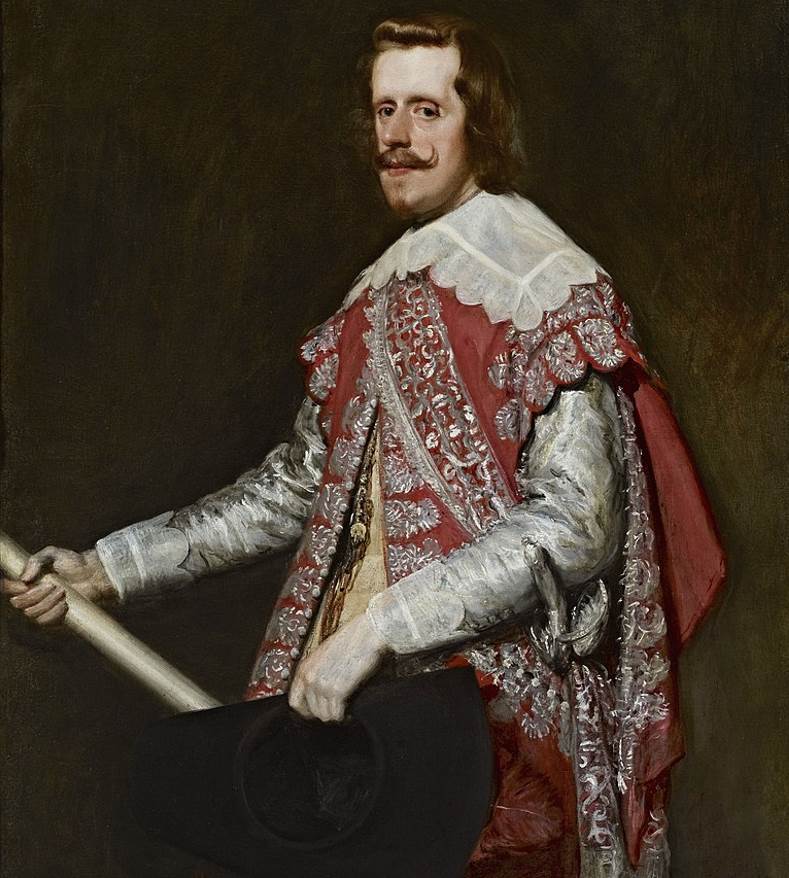
7. The Polish Rider – Rembrandt van Rijn
- Date created: 1655
- Dimensions: 117 × 135 centimeters (45.9 × 53.1 inches)
The Polish Rider is considered to be one of the masterpieces of Rembrandt, but some art historians have contested this attribution. Despite these critics, most people generally considered this to be a genuine work by the Dutch master.
The idealized character rides a horse through a desolate landscape. The true identity of the young man remains contested, but most art historians agree that he is wearing Polish attire, the reason why this Baroque painting was named as such.
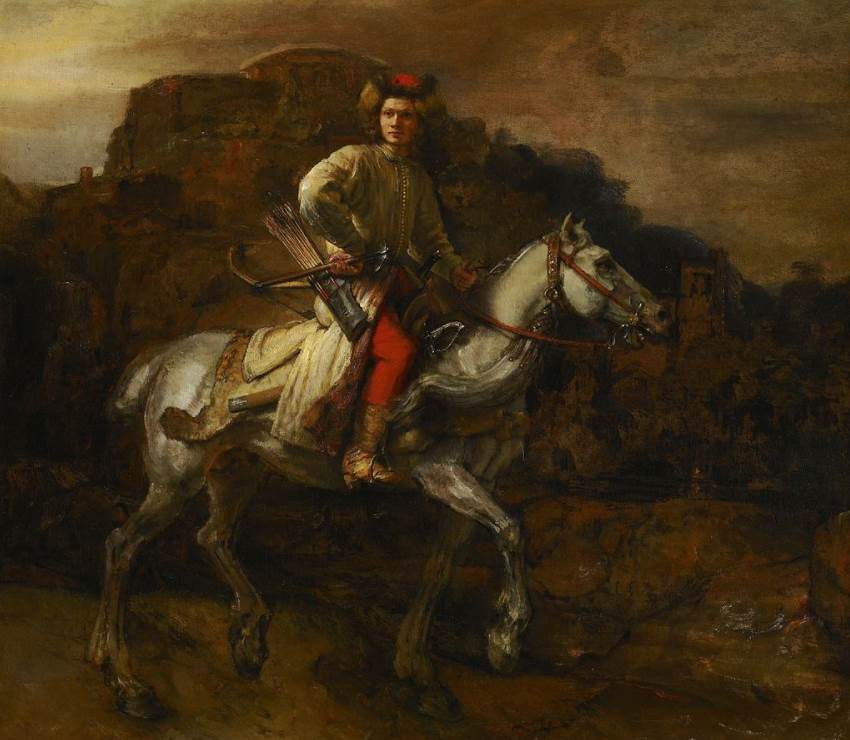
8. Officer and Laughing Girl – Johannes Vermeer
- Date created: 1657
- Dimensions: 50.48 × 46.04 centimeters (19.87 × 18.13 inches)
Officer and Laughing Girl is typical work of art by the Dutch artist of the Baroque era and Dutch Golden Age Johannes Vermeer (1632-1675). The small painting depicts a scene inside his own house, the location where he produced many of his most renowned works.
The light source coming from the left allowed the artist to fully exploit his mastery of light and shadow. The open window and the map on the wall were included in several of his works, artworks that give us an intimate look at life in the Dutch Republic in the 17th century.
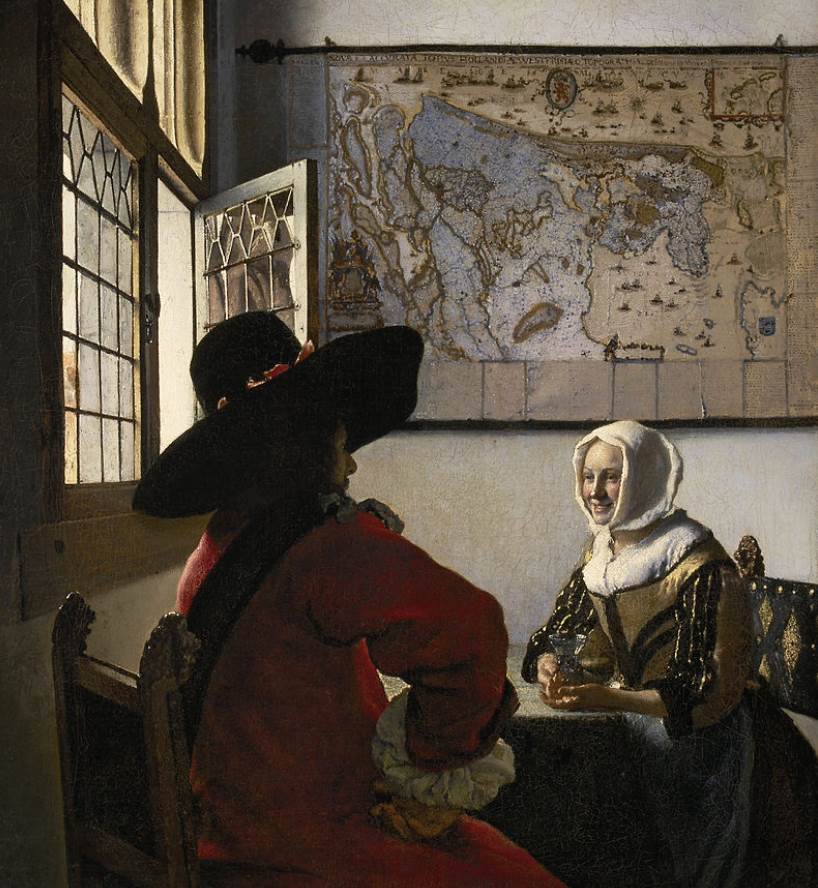
9. Cologne, the Arrival of a Packet-Boat: Evening – J.M.W. Turner
- Date created: 1826
- Dimensions: 168.6 x 224.2 centimeters (66.37 x 88.25 inches)
Cologne, the Arrival of a Packet-Boat: Evening, is one of the numerous masterpieces by Joseph Mallord William Turner (1775-1851), an Engish artist who is often referred to as J.M.W. Turner. The Romantic artist was a master of color and this is exemplified in this large painting.
The name of the title is self-explanatory as to what is depicted as we can see a passenger boat arriving on the Rhine River in the German city of Cologne. We can see the spire of the Church of Gross St. Martin, several defensive towers, and the city’s customs house.
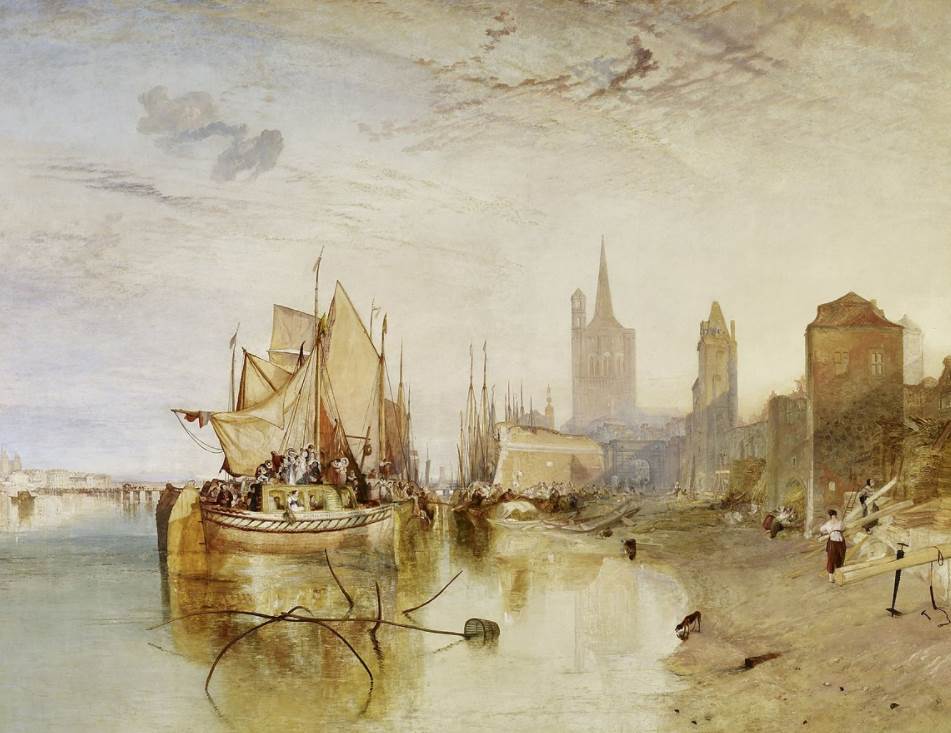
10. The Forge – Francisco Goya
- Date created: 1817
- Dimensions: 181.6 × 125 centimeters (71.5 × 49.25 inches)
The Forge is one of the most significant works of art by Francisco Goya (1746–1828), the leading Spanish painter of the Romantic era. It’s a painting that is considered to be the ultimate representation of the artist’s late style. Some art historians believe it was inspired by “Apollo in the Forge of Vulcan” (1630) by Diego Velázquez.
This was a rather gloomy period in Goya’s life, mainly because of the deep impact that the atrocities of the Peninsular War (1808-1814) had on him. He became extremely private and this is reflected in the dark works that he produced in the final decade of his life.
